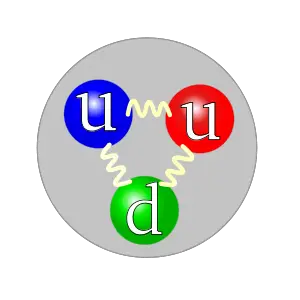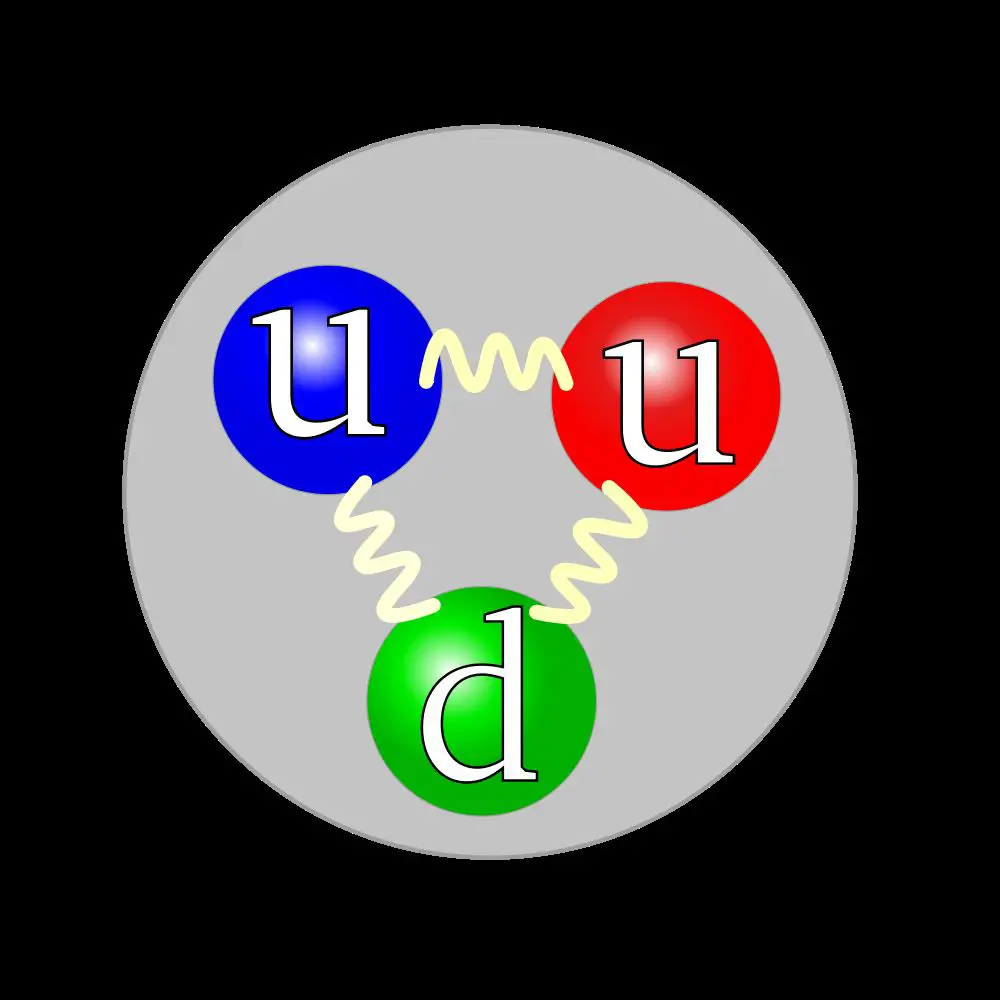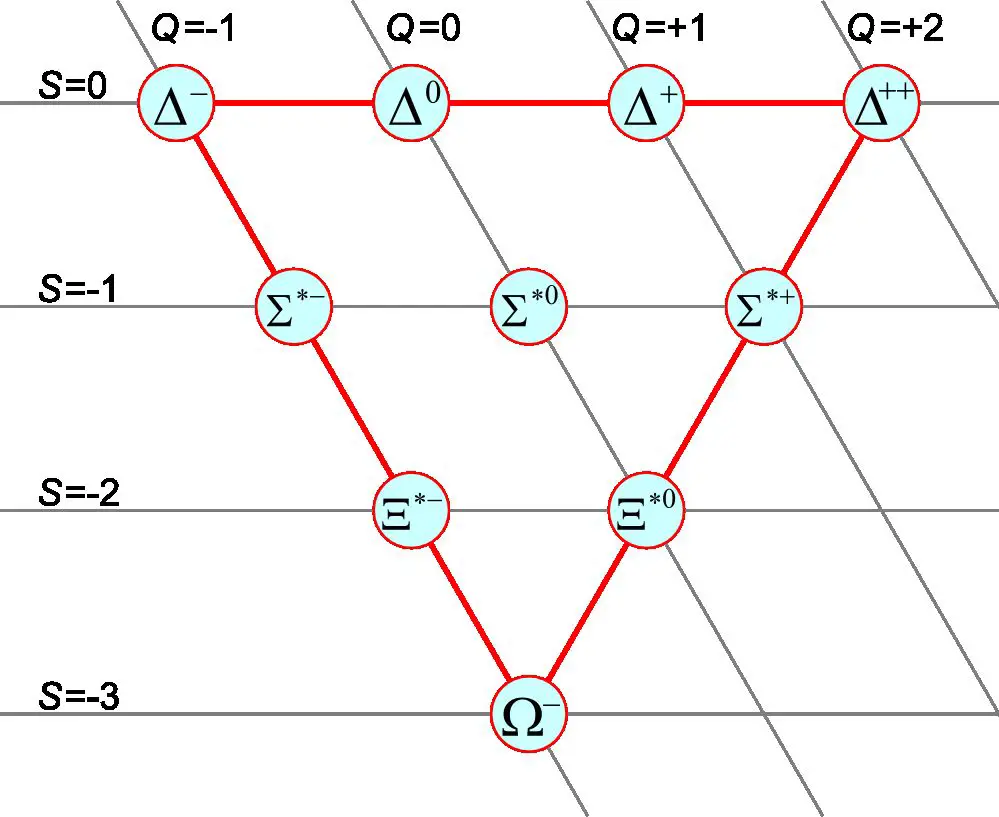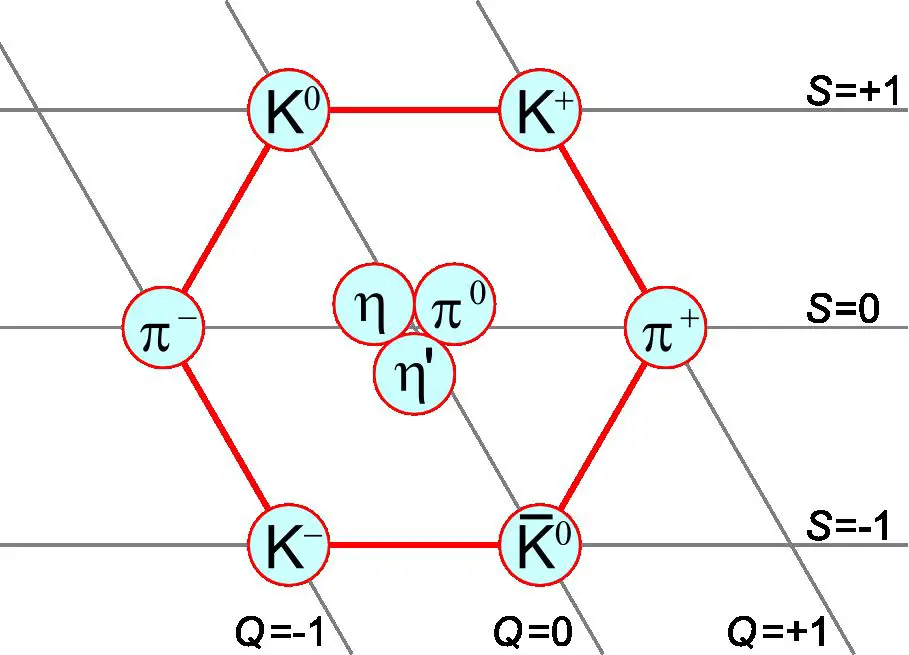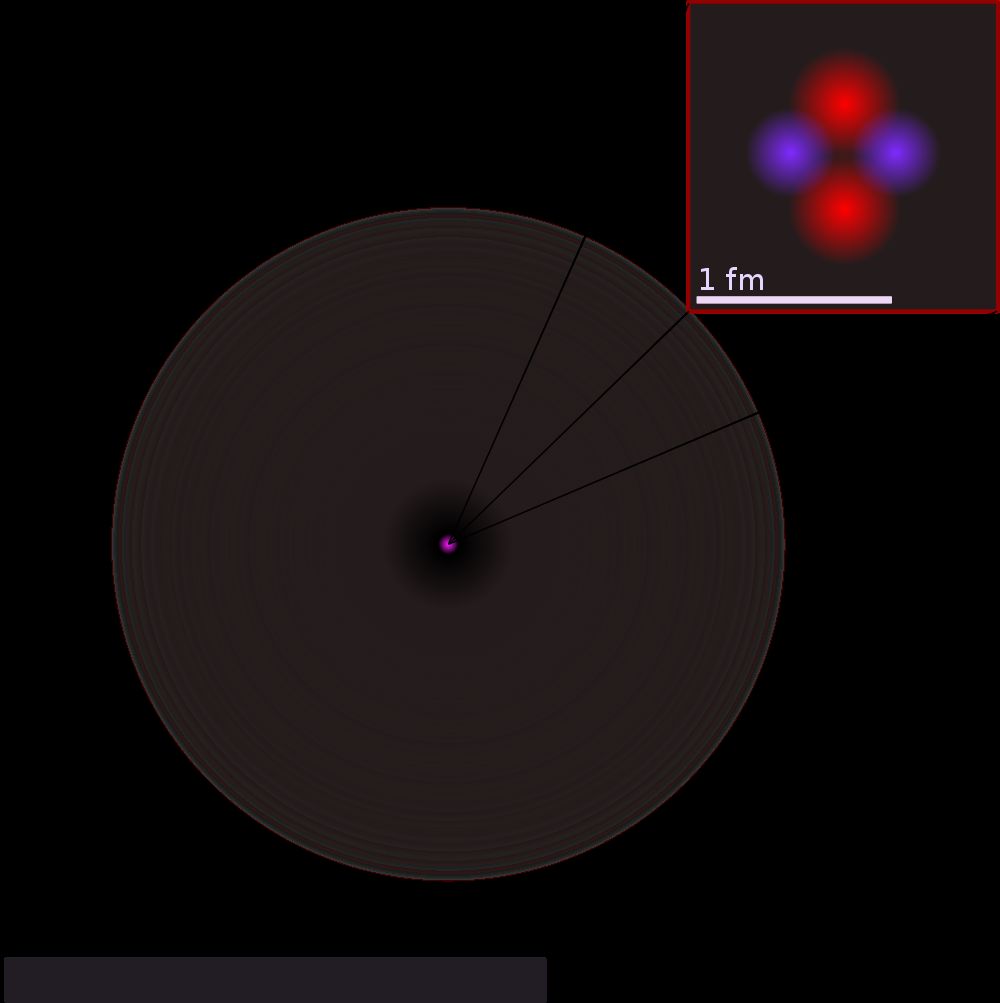Temel Parçacıklar
Temel parçacıklar ölçülebilir iç yapı içermeyen parçacıklardır, yani daha küçük parçacıklardan oluşmamışlardır. Kuantum alan teorisinin temel objeleridirler. Temel parçacıklar spinlerine göre sınıflandırılabilirler. Fermiyonların spini yarım iken, bozonların spini 1`dir.Standart Model
Parçacık fiziğinde Standart model temel parçacıklarının fiziksel yapılarının günümüzde anlaşılan şeklidir. Higgs bozonu hariç tüm standart model parçacıkları gözlenebilmiştir.Fermiyonlar (yarım spin)
Ana | FermiyonFermiyonların yarı-tamsayı spinleri vardır, bilinen tüm temel fermiyonlar içinse bu değer ½ dir. Her fermiyonun ayrı bir anti-parçacığı bulunur. Fermiyonlar maddenin temel yapıtaşıdır. Renk kuvveti ile etkileşimlerine göre sınıflandırılırlar. Standart modelde 12 temel fermiyon bulunur : altı kuark ve altı lepton.
Kuarklar
Ana | Kuark Kuarklar renk kuvveti ile etkileşirler. Kendi anti-parçacıkları antikuark olarak bilinir. Kuarkların altı farklı çeşnisi vardır:Leptonlar
Ana | LeptonLeptonlar renk kuvveti ile etkileşirler. Kendi anti-parçacıkları antilepton olarak bilinir (elektronun antiparçacığı tarihsel nedenlerle pozitron olarak bilinir). Altı lepton vardır. Uygun anti-parçacıklarıyla:
- Elektron ve Pozitron
- Elektron nötrino ve Elektron antinötrino
- Muon ve Antimuon
- Muon neutrino ve Muon antineutrino
- Tau lepton ve Antitauon
- Tau neutrino ve Tau antineutrino
Bozon (tamsayı spin)
Ana | Bozon Bozonların tamsayı spinleri vardır. Doğanın temel kuvvetleri ayar bozonları tarafından sağlanır, kütle ise Higgs bozonu tarafından kullanılacak şekilde varsayılmıştır. Standart Modele (ve gravitonu sağlamak için hem doğrusallaştırılmış genel görelilik hem de doğrusallaştırılmış string kuramına) göre temel bozonlar :|- |Foton |0 |1 |0 |Elektromanyetizma |Onaylanmış |- |W± | ±1 |1 |80.4 |Zayıf çekirdek kuvveti |Onaylanmış |- |Z0 |0 |1 |91.2 |Zayıf çekirdek kuvveti |Onaylanmış |- |Gluon |0 |1 |0 |Güçlü çekirdek kuvveti |Onaylanmış |- |Graviton |0 |2 |0 |Yerçekimi |Onaylanmamış |- |Higgs |0 |0 |>112 |Aşağı bakınız |Onaylanmamış |}
Higgs bozonu (spin-0) elektrozayıf kuram tarafından parçacık kütlelerinin kökenini açıklamak için gereklidir. Higgs mekanizması olarak bilinen bir süreçle Higgs bozonu ve diğer Standart Model fermiyonları SU(2) ayar simetrisinin kendiliğinden simetri kırılması ile kütle kazanır. Ancak dikkat edilmelidir ki, kütlenin kökenini açıklayan, Higgs mekanizması ve bazı diğer kuramlar, Higgs bozonunun varlığını açıklayamamaktadır. Aynı zamanda Standart Modelin tek gözlenemeyen parçacığıdır (graviton standart model parçacığı değildir). CERNde inşa halinde olan Geniş Hadron Çarpıştırıcı parçacık hızlandırı ile bu parçacığın da gözleneceği düşünülmektedir.
Kuramsal Parçacıklar
Supersimetrik kuramı daha fazla parçacığın varlığını önermektedir, 2008 itibarı ile hiçbiri deneysel olarak onaylanmamıştır.- fotino (spin-½) fotonun süpereşidir.
- gluino (spin-½) gluonun süpereşidir.
- gravitino (spin-3a„2) süper yerçekimi kuramı yer alan gravitonun süpereşi.
- neutralino (spin-½) birkaç nötr Standart model parçacığının süpereşinin süperkonumu. Karanlık madde için başı çeken adaydır. Yüklü bozonların eşlerine chargino ismi verilir.
- Steril nötrinolar Standart Modele birçok eklenti ile gelmiştir ve LSND sonuçlarını açıklamak için gerekli olabilir.
- Sleptonlar ve Skuarklar (spin-0) Standart Modeldeki fermionların süpersimetrik eşleridir.
Diğer teoriler ek bozonların varlığını öngörmektedir.
- The Higgs (spin-0) has been proposed to explain the origin of mass by the spontaneous symmetry breaking of the SU(2) gauge symmetry.
- The graviton (spin-2) has been proposed to mediate gravity in theories of quantum gravity.
- The graviscalar (spin-0) and graviphoton (spin-1).
- The axion (spin-0) is a pseudoscalar particle introduced in Peccei-Quinn theory to solve the strong-CP problem.
- The axino and saxion form together with the axion a supermultiplet in supersymmetric extensions of Peccei-Quinn theory.
- The branon is predicted in brane world models.
- The X and Y bosons are predicted by GUT theories to be heavier equivalents of the W and Z.
- The magnetic photon.
- The Majoron is predicted to understand neutrino masses by the seesaw mechanism.
``Mirror particles`` are predicted by theories that restore Parity symmetry.
``Magnetic monopole`` is a generic name for particles with non-zero magnetic charge. They are predicted by some GUT theories.
``Tachyon`` is a generic name for hypothetical particles that travel faster than the speed of light and have an imaginary rest mass.
The preon was a suggested substructure for both quarks and leptons, but modern collider experiments have all but disproven their existence.
Bileşik parçacıklar
Hadron
Hadrons are defined as strongly interacting composite particles. Hadrons are either:
- Composite fermions, in which case they are called baryons.
- Composite bosons, in which case they are called mesons.
Quark models, first proposed in 1964 independently by Murray Gell-Mann and George Zweig (who called quarks "aces"), describe the known Hadrons as composed of valence quarks and/or antiquarks, tightly bound by the color force, which is mediated by gluons. A "sea" of virtual quark-antiquark pairs is also present in each Hadron.
Notice that mesons are composite bosons, but not composed of bosons. All Hadrons, including mesons, are composed of quarks (which are fermions).
Baryonlar (fermion)
Sıradan baryonlar (bileşik fermiyonlar) üç değer kuark veya üç değer antikuark içerir.
- Nucleons are the fermionic constituents of normal atomic nuclei:
- Protons, composed of two up and one down quark (uud)
- Neutrons, composed of two down and one up quark (ddu)
- Hyperons, such as the Λ, Σ, Î, and Ω particles, which contain one or more strange quarks, are short-lived and heavier than nucleons. Although not normally present in atomic nuclei, they can appear in short-lived hypernuclei.
- A number of charmed and bottom baryons have also been observed.
Some hints at the existence of exotic baryons have been found recently; however, negative results have also been reported. Their existence is uncertain.
- Pentaquarks consist of four valence quarks and one valence antiquark.
Mezonlar (bozon)
Ordinary mesons (composite bosons) contain a valence quark and a valence antiquark, and include the pion, kaon, the J/ψ, and many other types of mesons. In quantum hadrodynamic models, the strong force between nucleons is mediated by mesons.
Exotic mesons may also exist. Positive signatures have been reported for all of these particles at some time, but their existence is still somewhat uncertain.
- Tetraquarks consist of two valence quarks and two valence antiquarks.
- Glueballs are bound states of gluons with no valence quarks.
- Hybrids consist of one or more valence quark-antiquark pairs and one or more real gluons.
Atom çekirdeği
" target="_blank"> atomunun yarı-hassas bir tasviri. Atom çekirdeğinde, protonlar kırmızı ve nötronlar mor resmedilmiştir, gerçekte çekirdek küresel simetriktir.]Atom çekirdeği proton ve nötronlardan oluşur. Her bir atomun belirli bir proton ve belirli bir nötron sayısı vardır. Çekirdek tepkimeleri bir atom çekirdeğini başka bir çekirdeğe donüştürebilir. Tüm izotoplar için izotoplar tablosuna bakınız.
Atomlar
Atoms are the smallest neutral particles into which matter can be divided by chemical reactions. An atom consists of a small, heavy nucleus surrounded by a relatively large, light cloud of electrons. Each type of atom corresponds to a specific chemical element.Total 118 elements(except element 117) have been discovered till date of which 111 have been officially named. Refer to the periodic table for an overview. Atoms consist of protons and neutrons within the nucleus. Within these particles, there are smaller particles still which are then made up of even smaller particles still.
Moleküller
Molekül sayfasından yönlendirilmiştir. -->Molecules are the smallest particles into which a non-elemental substance can be divided while maintaining the physical properties of the substance. Each type of molecule corresponds to a specific chemical compound. Molecules are composites of one or more atoms. See list of compounds for a list of molecules.
Condensed matter
The field equations of condensed matter physics are remarkably similar to those of high energy particle physics. As a result, much of the theory of particle physics applies to condensed matter physics as well; in particular, there are a selection of field excitations, called quasi-particles, that can be created and explored. These include:- Phonons are vibrational modes in a crystal lattice.
- Excitons are bound states of an electron and a hole.
- Plasmons are coherent excitations of a plasma.
- Polaritons are mixtures of photons with other quasi-particles.
- Polarons are moving, charged (quasi-) particles that are surrounded by ions in a material.
- Magnons are coherent excitations of electron spins in a material.
Diğer
- A WIMP (weakly interacting massive particle) is any one of a number of particles that might explain dark matter (such as the neutralino or the axion).
- The pomeron, used to explain the elastic scattering of Hadrons and the location of Regge poles in Regge theory.
- The skyrmion, a topological solution of the pion field, used to model the low-energy properties of the nucleon, such as the axial vector current coupling and the mass.
- A goldstone boson is a massless excitation of a field that has been spontaneously broken. The pions are quasi-Goldstone bosons (quasi- because they are not exactly massless) of the broken chiral isospin symmetry of quantum chromodynamics.
- A goldstino is a Goldstone fermion produced by the spontaneous breaking of supersymmetry.
- An instanton is a field configuration which is a local minimum of the Euclidean action. Instantons are used in nonperturbative calculations of tunneling rates.
- A dyon is a hypothetical particle with both electric and magnetic charges
- A geon is an electromagnetic or gravitational wave which is held together in a confined region by the gravitational attraction of its own field energy.
- A UHECR is an ultra-high energy cosmic ray (probably a proton) falling well beyond the GZK cutoff, the energy limit beyond which virtually no cosmic rays should be detected.
- A spurion is the name given to a "particle" inserted mathematically into an isospin-violating decay in order to analyze it as though it conserved isospin.
- An inflaton is the generic name for an unidentified scalar particle responsible for the cosmic inflation.
- A chronon is a proposed quantum of time.
Hıza göre sınıflandırma
- A tardyon or bradyon travels slower than light and has a non-zero rest mass.
- A luxon travels at the speed of light and has no rest mass.
- A tachyon (mentioned above) is a hypothetical particle that travels faster than the speed of light and has an imaginary rest mass.
Ayrıca bakınız
- Fictional elements, isotopes and atomic particles
- Isotope table for a list of isotopes.
- List of compounds for a list of molecules.
- Periodic table for an overview of atoms.
- Standard Model for the current theory of these particles.
- Acceleron
Kaynakça
- cite journal | author=S. Eidelman et al. | title="Review of Particle Physics" | journal=Physics Letters B | year=2004 | volume=592 | pages=1 ``(All information on this list, and more, can be found in the extensive, annually-updated review by the Particle Data Group)``
- Joseph F. Alward, `` Elementary Particles``, Department of Physics, University of the Pacific
- `` Elementary particles``, ``The Columbia Encyclopedia``, Sixth Edition. 2001.
parçacıklar
Bilim listeleri
Link FA|ru
কণাসমূহের তালিকা
